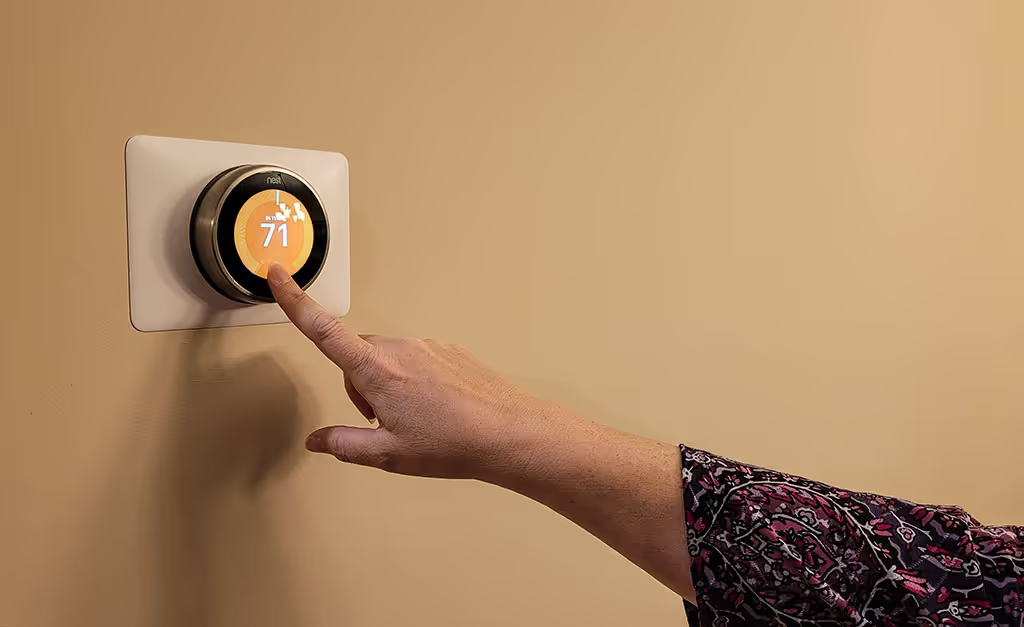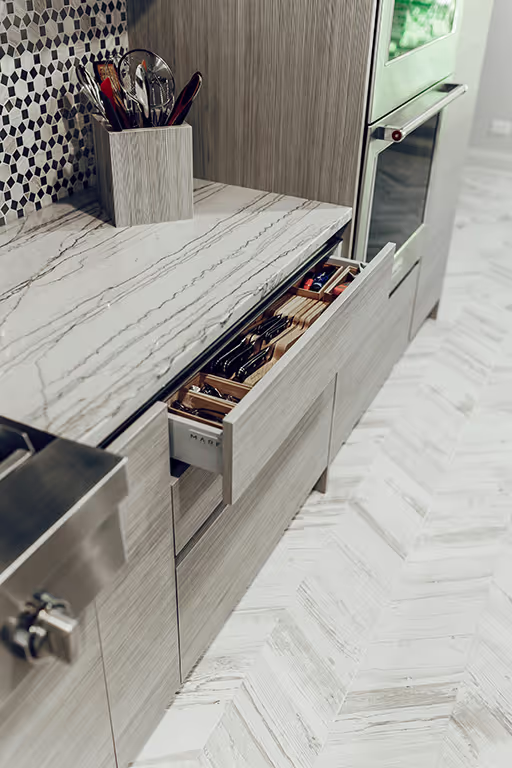Konserwacja płytek porcelanowych 101: Jak sprawić, by Twoje płytki wyglądały na nowe
Płytki porcelanowe są popularne ze względu na ich trwałość i piękno, ale jak każda powierzchnia, potrzebują regularnej pielęgnacji, aby zachować swój wygląd. Dzięki odpowiedniej rutynie konserwacji płytek mogą zachować swój pierwotny połysk i wyglądać jak nowe przez lata. Oto prosty przewodnik po skutecznej konserwacji płytek, obejmujący wszystko, od codziennej pielęgnacji po wskazówki dotyczące głębokiego czyszczenia.

1. Codzienne czyszczenie: usuwanie kurzu i zanieczyszczeń
Do codziennej pielęgnacji regularne zamiatanie lub odkurzanie płytek porcelanowych może zapobiec gromadzeniu się kurzu i zanieczyszczeń. Użyj miotły z miękkim włosiem lub odkurzacza z nasadką szczotkową, aby uniknąć zarysowania powierzchni. Rutynowe zamiatanie jest niezbędne, szczególnie w obszarach o dużym natężeniu ruchu, ponieważ ziarnistość może z czasem zużywać się powierzchnię płytki. Ten prosty krok chroni płytki przed gromadzeniem się brudu i pomaga im zachować połysk.
2. Cotygodniowe mycie: utrzymuj świeżość płytek
Czyszczenie raz w tygodniu ciepłą wodą i łagodnym, neutralnym pH środkiem czyszczącym jest idealne do regularnej konserwacji płytek. Te środki czyszczące są delikatne dla płytek porcelanowych i pomagają usunąć pozostały kurz lub brud bez pozostawiania resztek. Podczas mycia uważaj, aby nie używać zbyt dużej ilości wody. Nadmierna wilgoć może przenikać do linii zaprawy, potencjalnie powodując problemy z czasem. Po umyciu szybkie spłukanie czystą wodą i suchym mopem może pomóc uniknąć plam i smug wody, dzięki czemu płytki wyglądają na czyste i wypolerowane.
3. Unikaj ostrych środków czyszczących i narzędzi ściernych
Narzędzia ścierne i ostre chemiczne środki czyszczące mogą stępić lub uszkodzić płytki porcelanowe. Unikaj używania wybielaczy, amoniaku lub środków czyszczących na bazie kwasów, ponieważ mogą one z czasem osłabić wykończenie płytki. Zamiast tego trzymaj się nieściernych gąbek lub miękkich ściereczek do głębszego szorowania. W przypadkach, gdy występują plamy, delikatny peeling ciepłą wodą i odrobiną mydła do naczyń często może usunąć plamę. Aby uzyskać twardsze plamy, wypróbuj niewielką ilość sody oczyszczonej zmieszanej z wodą, aby uzyskać delikatną pastę. Nałóż go na plamę, pozwól jej krótko usiąść, a następnie delikatnie wyszoruj miękką szczoteczką przed spłukaniem.
4. Ochrona przed meblami i ciężkimi przedmiotami
Aby zapobiec zadrapaniom i zadrapaniom, użyj filcowych podkładek lub gumowych ochraniaczy pod nogami mebli spoczywających na podłogach z płytek. Jest to szczególnie ważne w przypadku często przenoszonych mebli, takich jak krzesła i stoły, ponieważ mogą one z czasem powodować zadrapania. Przenosząc ciężkie przedmioty po płytce, podnoś je zamiast przeciągać lub używaj ruchomej maty. Te proste kroki zapobiegawcze znacznie przyczyniają się do zachowania powierzchni płytki, zapewniając jej utrzymanie w doskonałym stanie.
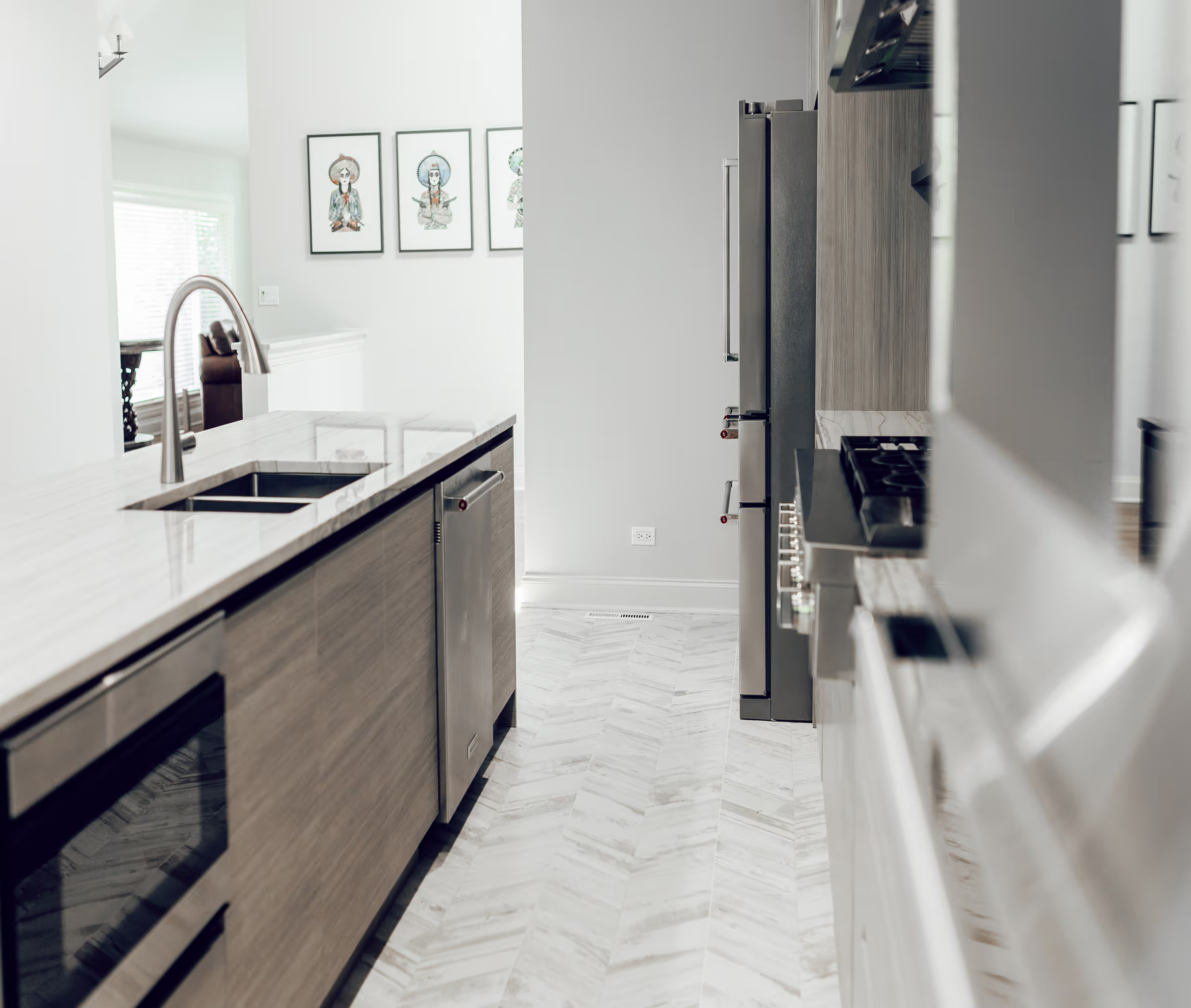
5. Szybka reakcja na wycieki
Na pewno dojdzie do wycieków, zwłaszcza w obszarach takich jak kuchnie i łazienki. Szybkie działanie jest kluczem do zapobiegania plamom, mimo że porcelana jest ogólnie odporna na plamy. W przypadku typowych wycieków, takich jak kawa, wino lub olej, natychmiast osusz je czystą szmatką, aby uniknąć wchłaniania. Szybkie wycieranie ciepłą wodą może pomóc usunąć pozostałe pozostałości. Jeśli zauważysz, że wyciek jest tłusty, do wody można dodać niewielką ilość mydła do naczyń, aby usunąć wszelkie uporczywe ślady. Ten rodzaj szybkiego czyszczenia jest prosty, ale skuteczny, dzięki czemu płytki pozostają nieskazitelne.
6. Głębokie czyszczenie co kilka miesięcy
Oprócz codziennej i cotygodniowej konserwacji płytek, rozważ głębokie czyszczenie płytek porcelanowych co kilka miesięcy. W tym celu szczególnie skuteczny może być mop parowy. Wnika głęboko, pomagając odkażać zarówno powierzchnię płytek, jak i linie zaprawy bez użycia ostrych chemikaliów.Jeśli nie masz mopa parowego, mieszankę wody i kilka kropli delikatnego detergentu można nałożyć mopem lub miękką gąbką. Następnie należy płukać, aby usunąć wszelkie pozostałości mydła. To sporadyczne głębokie czyszczenie pomaga płytkom zachować nowy wygląd z czasem, utrzymując powierzchnię świeżą i wolną od gromadzenia się.
7. Uszczelnianie zaprawy dla trwałej ochrony
Chociaż same płytki porcelanowe są odporne na wilgoć i plamy, linie zaprawy mogą być bardziej wrażliwe. Aby chronić fugę, rozważ zastosowanie uszczelniacz do fug co 6—12 miesięcy. Ta bariera pomaga zapobiegać wchłanianiu wilgoci, co może prowadzić do przebarwień lub wzrostu pleśni w wilgotnych obszarach. Zastosowanie uszczelniacza do zaprawy jest prostym zadaniem: po prostu szczotkuj go zgodnie z instrukcjami na etykiecie produktu. Uszczelnianie linii fug może mieć duży wpływ na wygląd i trwałość pomieszczeń wyłożonych kafelkami.
8. Uważne używanie ciężkich lub ostrych przedmiotów
Chociaż płytki porcelanowe są bardzo trwałe, nadal mogą pękać lub odpryskiwać od silnego uderzenia lub ostrych przedmiotów. Pamiętaj o używaniu ostrych narzędzi bezpośrednio na płytkach lub upuszczaniu ciężkich przedmiotów na podłogę. Na przykład używanie miękkiej maty lub dywanu w miejscach o dużym zastosowaniu może pomóc w pochłanianiu uderzeń i zapobieganiu potencjalnym uszkodzeniom. Jeśli płytka odpryska się lub pęka, dostępne są zestawy naprawcze, które pomogą pokryć drobne uszkodzenia. Zestawy te często zawierają wypełniacze dopasowane do koloru, które wtapiają się w płytkę, zapewniając skuteczne i ekonomiczne rozwiązanie dla małych niedoskonałości.

Nasze ostatnie przemyślenia na temat konserwacji podłóg
Utrzymywanie płytek porcelanowych w doskonałej formie nie wymaga skomplikowanej rutyny. Wykonując te podstawowe kroki, możesz chronić i konserwować swoje płytki przez wiele lat. Codzienne zamiatanie, cotygodniowe mycie, sporadyczne głębokie czyszczenie oraz ostrożne obchodzenie się z meblami i wyciekami przyczyniają się do zachowania wyglądu i jakości płytki.
Łatwa konserwacja: utrzymanie najlepszego wyglądu europejskich płytek
Europejskie płytki, z bogatą historią, misternymi wzorami i ponadczasowym pięknem, są cenionym dodatkiem do każdego domu. Ich elegancja i trwałość sprawiają, że są popularnym wyborem do podłóg, ścian i blatów. Jednak zachowanie ich pierwotnego połysku i zapobieganie uszkodzeniom wymaga odpowiedniej pielęgnacji i czyszczenia. W Majestatyczne płytki, rozumiemy wartość Twojej inwestycji i jesteśmy zaangażowani w to, aby Twoje europejskie płytki wyglądały jak najlepiej przez wiele lat.
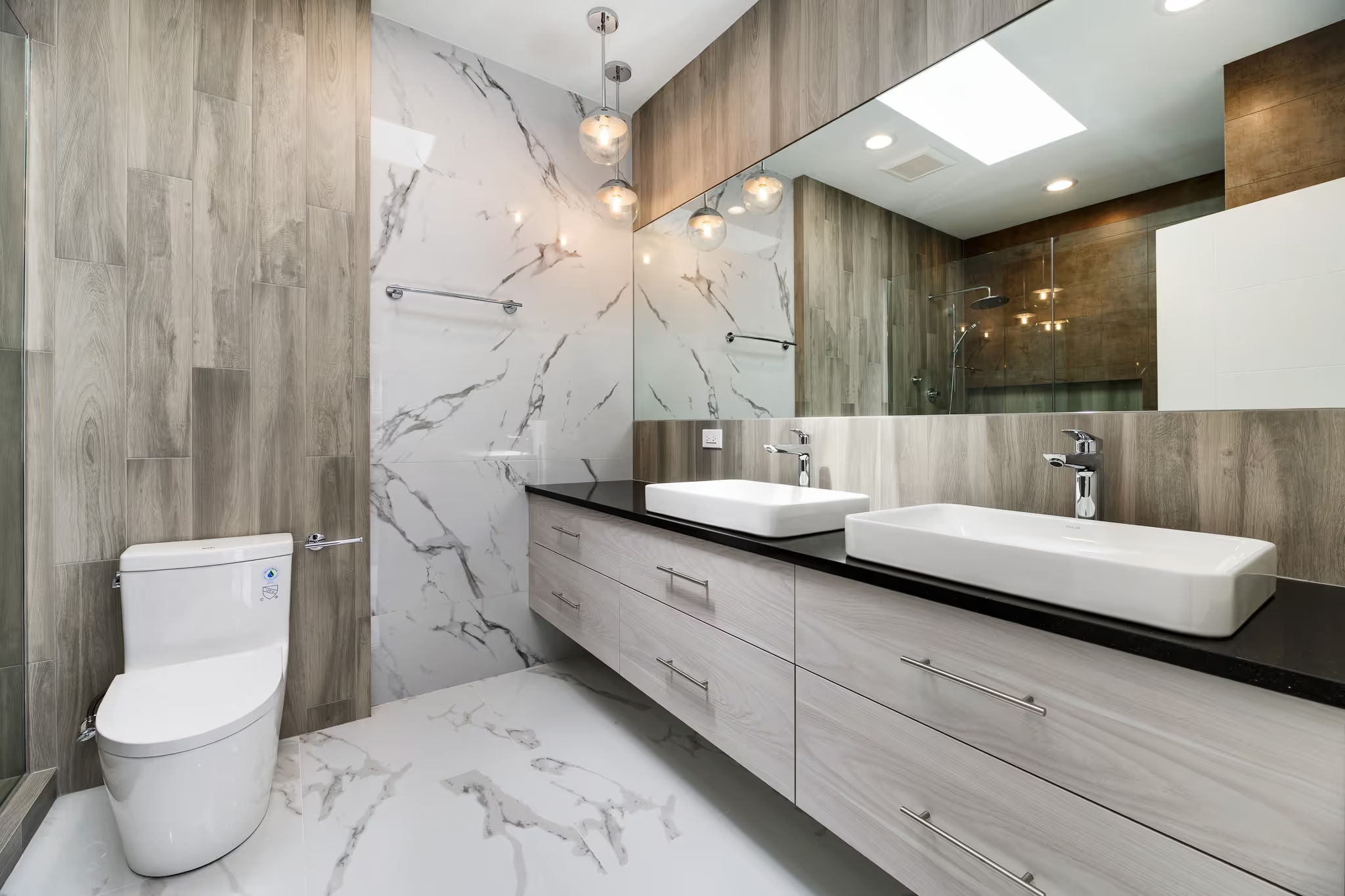
Zrozumienie twoich płytek
Pierwszym krokiem do prawidłowej konserwacji jest zrozumienie konkretnego rodzaju płytek europejskich, które posiadasz. Różne materiały, takie jak ceramika, porcelana i kamień naturalny, wymagają nieco innego podejścia do czyszczenia. Oto krótki przegląd:
Płytki ceramiczne i porcelanowe
Są to najczęstsze rodzaje płytek europejskich i generalnie są bardzo łatwe w utrzymaniu. Oni są wypalane w wysokich temperaturach, tworząc je gęsty, nieporowaty i wysoce odporny na wodę, plamy i zarysowania. To sprawia, że są idealne do obszarów o dużym natężeniu ruchu, takich jak kuchnie, łazienki i wejścia. Dodatkowo, ich powierzchnia przeszklona zapewnia dodatkową ochronę i ułatwia ich czyszczenie. Należy jednak pamiętać, że nawet płytki ceramiczne i porcelanowe mogą być podatne na uszkodzenia spowodowane ostrymi chemikaliami i metodami czyszczenia ściernego.
Płytki z kamienia naturalnego
Te płytki, w tym marmur, granit i trawertyn, dodają każdej przestrzeni odrobinę luksusu i ponadczasowej elegancji. Oni są naturalnie piękne i dostępne w szerokiej gamie kolorów, wzorów i faktur. jednak, są bardziej porowaty niż płytki ceramiczne i porcelanowe, czyniąc je bardziej podatne na zadrapania, trawienie z substancji kwaśnych (takich jak ocet lub soki cytrusowe) i plamy z wody. Wymaga to więcej delikatne podejście do czyszczenia i wykorzystanie specjalnie opracowane środki czyszczące aby uniknąć uszkodzenia powierzchni kamienia.

Rutynowe czyszczenie
Regularne czyszczenie jest kluczem do zachowania piękna i długowieczności twoich europejskich płytek. Oto, co musisz wiedzieć:
Częstotliwość
W zależności od ruch pieszy i poziom brudu i brudu, staraj się przynajmniej wyczyścić płytki raz w tygodniu. W przypadku obszarów o dużym natężeniu ruchu, takich jak podłogi kuchenne lub wejścia łazienkowe, rozważ codzienne czyszczenie wilgotnym mopem. Pomoże to usunąć luźny brud i zapobiegnie gromadzeniu się i potencjalnemu zarysowaniu powierzchni płytki.
Rozwiązanie czyszczące
Unikaj używania ostrych chemikaliów lub ściernych środków czyszczących, ponieważ mogą one stępić wykończenie płytki a uszkodzić fugę. Zamiast tego wybierz neutralny środek czyszczący pH specjalnie zaprojektowany dla Twojego typu płytek. Większość producentów zaleca własne środki czyszczące, aby zapewnić kompatybilność i optymalne wyniki. Te środki czyszczące zostały opracowane tak, aby były delikatne dla powierzchni płytek, jednocześnie skutecznie usuwając brud i brud. Wybierając roztwór czyszczący, zawsze uważnie czytaj etykietę i upewnij się, że jest odpowiedni dla konkretnego rodzaju płytki.
Mop i wysusz
Użyj czystego mopa z ciepła woda i roztwór czyszczący. Unikaj używania nadmiernej ilości wody, ponieważ może ona przenikać do zaprawy i spowodować uszkodzenie. Jest to szczególnie ważne dla płytki z kamienia naturalnego, ponieważ nadmiar wody może przyczynić się do barwienie i trawienie. Po zmywaniu upewnij się, że podłoga całkowicie wyschnie, aby zapobiec plamom z wody i rozwojowi pleśni. Możesz przyspieszyć proces suszenia za pomocą wentylatora wentylacyjnego lub otwierania okien w celu umożliwienia cyrkulacji powietrza.

Głębokie czyszczenie i konserwacja fug
Chociaż rutynowe czyszczenie jest niezbędne, konieczne jest sporadyczne głębokie czyszczenie, aby usunąć uporczywy brud, brud i plamy, których nie można rozwiązać przez regularne mycie.
Techniki głębokiego czyszczenia
W zależności od twojego typ płytki, może być konieczne użycie specjalna podkładka czyszcząca lub odkurzacz parowy do głębszego czyszczenia. Jednak ważne jest, aby zachowaj ostrożność a zawsze zapoznaj się z zaleceniami producenta przed użyciem jakiejkolwiek metody czyszczenia lub produktu. Zastosowanie niewłaściwej metody czyszczenia lub produktu może trwale uszkodzić płytki. Na przykład czyszczenie parą nie jest zalecane w przypadku płytek z kamienia naturalnego, ponieważ wysokie ciepło i wilgoć mogą uszkodzić powierzchnię kamienia. Ważne jest również, aby przetestuj dowolny środek czyszczący na niepozornym miejscu najpierw płytki, aby upewnić się, że nie powoduje żadnych przebarwień ani uszkodzeń.
Konserwacja fug
Fuga, materiał wypełniający szczeliny między płytkami, może z czasem gromadzić brud, przebarwienia, a nawet pleśń. Do regularnej konserwacji można użyć roztwór do czyszczenia zaprawy lub pasta sodowa oczyszczona aby usunąć drobne plamy. Rozwiązania te są na ogół łagodne i bezpieczne dla większości rodzajów fug. Jednakże, dla głębokie czyszczenie lub mocno zabarwiona zaprawa, szczególnie w obszarach o wysokiej wilgotności, takich jak łazienki, rozważ profesjonalne usługi sprzątania. Profesjonaliści mają wiedza i wyposażenie do bezpiecznego i skutecznego czyszczenia głębokiego i odnawiania zaprawy. Mogą też zalecać odpowiednie rozwiązania i techniki czyszczące aby zapewnić optymalne rezultaty bez uszkadzania płytek lub zaprawy.

Dodatkowe wskazówki dotyczące konserwacji płytek europejskich
Minimalizuj ścieranie
Użyj wycieraczki przy wejściach, aby zapobiec przedostawaniu się brudu i żwiru do domu. Pomoże to zmniejszyć ilość brudu i gruzu śledzonego na płytkach, minimalizując potrzebę częstego czyszczenia i zmniejszając ryzyko zarysowań i otarć. Dodatkowo, miejsce filcowe podkładki pod nogami mebli, aby zapobiec zadrapaniom i zarysowaniom na powierzchni płytki.
Szybko zaadresuj wycieki
Nie pozwól, aby wycieki siedziały na płytkach przez dłuższy czas. Oczyść je natychmiast aby zapobiec plamom i trawieniu. W przypadku wycieków cieczy, zetrzyj nadmiar czystą, chłonną ściereczką. Unikaj szorowania, ponieważ może to rozprzestrzenić plamę i pogorszyć ją. Dla lepkie wycieki, użyj wilgotnej szmatki z ciepłą wodą i łagodnym mydłem do naczyń lub roztworu czyszczącego specjalnie zaprojektowanego dla Twojego typu płytek. Zawsze dokładnie spłucz obszar czystą wodą i całkowicie wysusz, aby zapobiec plamom z wody i rozwojowi pleśni.
Używaj odpowiednich narzędzi do czyszczenia
Unikaj używania ostrych gąbek, podkładek do szorowania lub ściernych szczotek czyszczących, ponieważ mogą one porysować powierzchnię płytki i uszkodzić zaprawę. Zdecyduj się na miękkie ściereczki lub mopy z mikrofibry. Są one delikatne dla powierzchni płytek i skuteczne w usuwaniu brudu i brudu. Możesz także użyć gumowa ściągaczka w celu usunięcia nadmiaru wody po zmywaniu, szczególnie w obszarach podatnych na plamy z wody.
Profesjonalne sprzątanie
Dla głębokie czyszczenie płytek z kamienia naturalnego, jak marmur, granit i trawertyn, okazjonalnie profesjonalne sprzątanie jest zalecany. Specjaliści mają wiedzę i sprzęt do bezpiecznego i skutecznego obchodzenia się z tymi delikatnymi materiałami. Mogą używać specjalistyczne rozwiązania i techniki czyszczące aby usunąć głęboko zakorzeniony brud, brud i plamy oraz przywrócić naturalne piękno kamienia. Dodatkowo mogą ponownie nałóż uszczelniacze na niektórych rodzajach płytek z kamienia naturalnego, aby chronić je przed plamami i trawieniem.
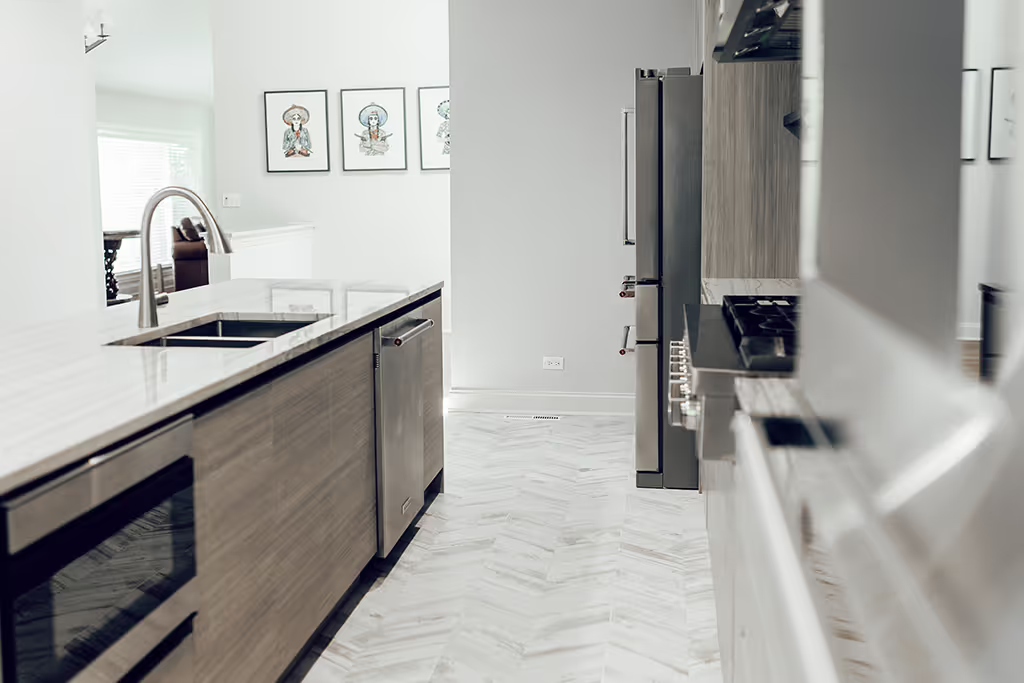
Dlaczego warto wybrać Majestic Tiles - Twój outlet z płytkami blisko mnie
Postępując zgodnie z tymi prostymi wskazówkami i zaleceniami, możesz skutecznie konserwować swoje europejskie płytki i cieszyć się ich pięknem i funkcjonalnością przez wiele lat. W Majestic Tiles oferujemy szeroką gamę płytek europejskich. Nasz personel chętnie odpowie również na wszelkie pytania dotyczące wyboru, instalacji i pielęgnacji płytek. Odwiedź nasz salon, aby uzyskać fachowe porady i wybór najwyższej jakości płytek europejskich, które podnoszą styl i elegancję Twojego domu.
.avif)
Let’s Build Your
Contact Majestic Tiles today to schedule a free consultation.
Uzyskaj spersonalizowaną wycenę.svg)

.avif)
.avif)

